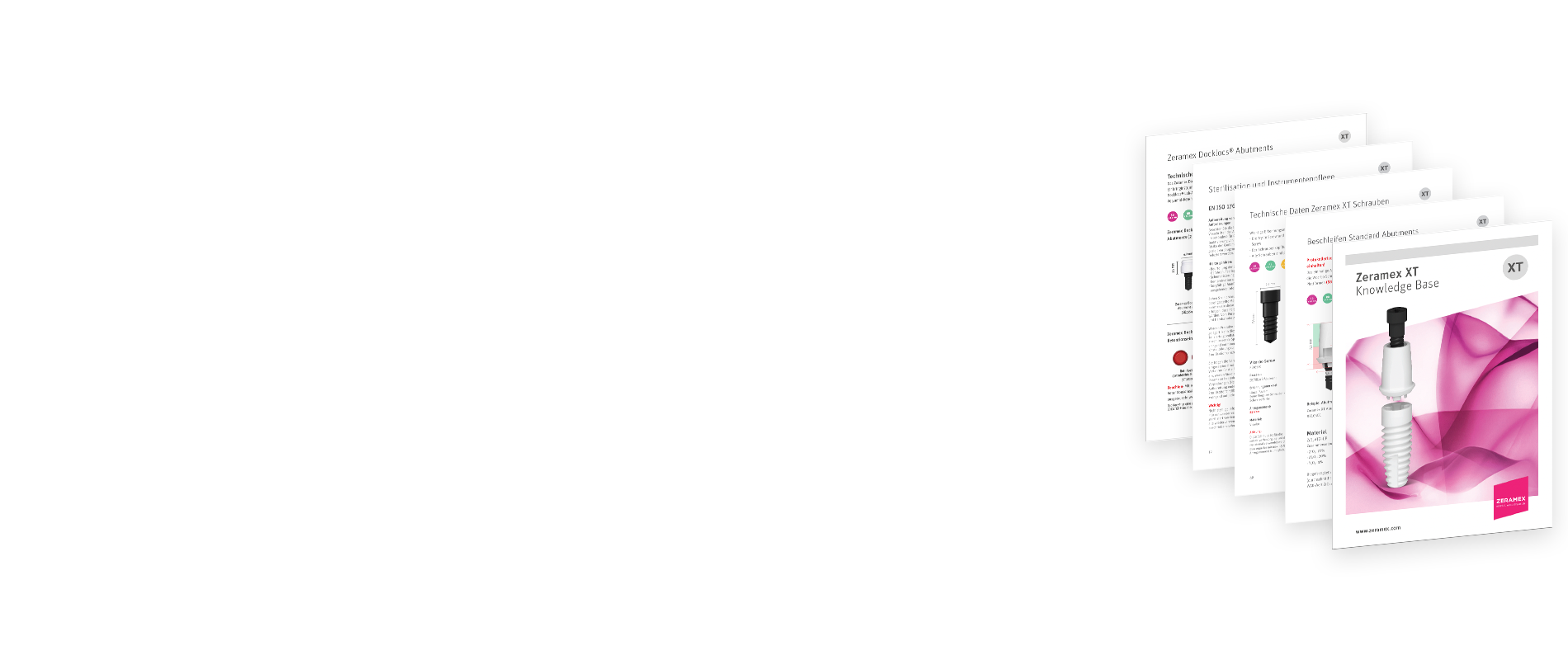Can better aesthetic results be achieved with ceramic implants?

Ceramic implants have a natural white color, making them visually superior to titanium implants. With metallic implants, gray edges can appear. This is excluded with the natural white ceramic.
Clinical studies by Cosgarea et al. (2015) and Kniha et al. (2020) confirm in patients, that zirconia implants are superior to titanium implants regarding aesthetics, i.e., zirconia does not cause blue-greyish shimmers hindering a successful aesthetical outcome. The risk of discoloration in the peri-implant mucosa by titanium implants is particularly given in patients with a thin gingival biotype. Kniha et al. 2020 further demonstrate less papilla deficit, i.e., better papillary fill for zirconia, presumably due to better soft tissue adhesion.
A systematic review and meta-analysis by Pitta et al. 2020 found significant lower color changes (compared to natural teeth) around ceramic compared to metal abutments.
A systematic review by Comisso et al. (2021) also found a clear advantage of zirconia over titanium implants regarding aesthetics, focusing on the pink and white esthetic scores, through evaluating the available scientific literature.
Naveau et al. 2019 similarly conclude that zirconia has an advantage over titanium in regard to aesthetics. Zirconia shows good to excellent aesthetic integration, not only regarding soft tissue color but also regarding the appearance and the height of the papillae, the interproximal extension of the gingiva between the teeth.
Another aspect is discussed in the review from Noumbissi et al. (2019), which is the local discoloration/grey staining of peri-implant tissues associated to the titanium ion release. Since zirconia ceramics are resistant to corrosion, no ion release and negative influence thereof on soft tissue color and aesthetics is suspected.
References
Comisso I, Arias-Herrera S, Gupta S. Zirconium dioxide implants as an alternative to titanium: a systematic review. J Clin Exp Dent. 2021;13(5):e511-e519. doi:10.4317/jced.58063.
Cosgarea R, Gasparik C, Dudea D, Culic B, Dannewitz B, Sculean A. Peri-implant soft tissue colour around titanium and zirconia abutments: a prospective randomized controlled clinical study. Clin Oral Implants Res. 2015;26(5):537-544. doi:10.1111/clr.12440.
Ioannidis A, Cathomen E, Jung RE, Fehmer V, Hüsler J, Thoma DS. Discoloration of the mucosa caused by different restorative materials – a spectrophotometric in vitro study. Clin Oral Implants Res. 2017;28(9):1133-1138. doi:10.1111/clr.12928.
Jung RE, Sailer I, Hämmerle CHF, Attin T, Schmidlin P. In vitro color changes of soft tissues caused by restorative materials. Int J Periodontics Restorative Dent. 2007;27(3):251-257.
Happe A, Schulte-Mattler V, Strassert C, et al. In vitro color changes of soft tissues caused by dyed fluorescent zirconia and nondyed, nonfluorescent zirconia in thin mucosa. Int J Periodontics Restorative Dent. 2013;33(1):e1-e8. doi:10.11607/prd.1303.
Kniha K, Bock A, Peters F, et al. Aesthetic aspects of adjacent maxillary single-crown implants - influence of zirconia and titanium as implant materials. Int J Oral Maxillofac Surg. 2020;49:1489-1496. doi:10.1016/j.ijom.2020.04.003.
Naveau A, Rignon-Bret C, Wulfman C. Zirconia abutments in the anterior region: a systematic review of mechanical and esthetic outcomes. J Prosthet Dent. 2019;121(5):775-781.e1. doi:10.1016/j.prosdent.2018.08.005.
Noumbissi S, Scarano A, Gupta S. A literature review study on atomic ions dissolution of titanium and its alloys in implant dentistry. Materials (Basel). 2019;12(3):368. doi:10.3390/ma12030368.
Pitta J, Zarauz C, Pjetursson B, Sailer I, Liu X, Pradies G. A systematic review and meta-analysis of the influence of abutment material on peri-implant soft tissue color measured using spectrophotometry. Int J Prosthodont. 2020;33(1):39-47. doi:10.11607/ijp.6393.
Sala L, Bascones-Martínez A, Carrillo-de-Albornoz A. Impact of abutment material on peri-implant soft tissue color. An in vitro study. Clin Oral Investig. 2017;21(7):2221-2233. doi:10.1007/s00784-016-2015-9.
Thoma DS, Ioannidis A, Cathomen E, Hämmerle CH, Hüsler J, Jung RE. Discoloration of the peri-implant mucosa caused by zirconia and titanium implants. Int J Periodontics Restorative Dent. 2016;36(1):39-45. doi:10.11607/prd.2663.
Didn't find the answer to your question?
Leave a comment
Comments
No comments have been posted yet.


